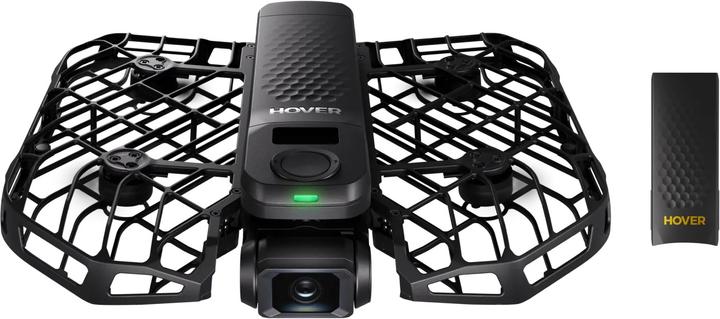
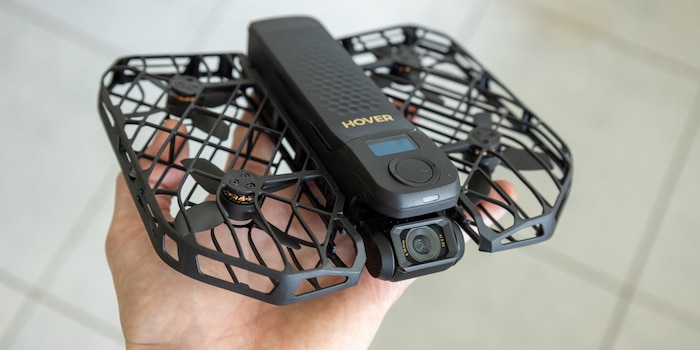
Hover Air X1 Promax selfie drone review
Hover Air drones get flying immediately, without needing a remote. The X1 Promax offers more features, a better range und and improved recording quality compared to the X1. In my test, it impresses on nearly every level.
ZeroZero Robotics brought a breath of fresh air to 2023 with the Hover Air X1: a small, lightweight drone that’s a breeze to operate and requires no remote control. I called it a «flying selfie camera» in my test. Now we’ve got two more X1 drones: the X1 Pro and the X1 Promax. The Promax I’m testing here has a slightly better camera than the Pro and, in addition to microSD memory, an extra 64 GB of internal storage instead of 32 GB. Otherwise, the specifications are largely identical.
The concept behind the Promax is the same as that of the X1: a drone that doesn’t need remote control. Many flight modes are fully automatic. They either fly a predetermined route, say a circle, or they follow you in a predefined way. The drone lands on your hand when you stretch it out. There’s also a manual mode where you control the drone with your smartphone.
The X1 Promax does almost everything better than the X1; it only lags behind in its dimensions. It’s a bit bigger and heavier, but at 192 grammes it’s still well below the regulatory limit of 250 grammes.
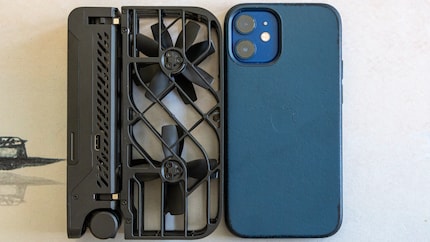
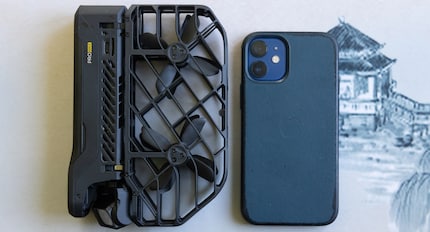
Battery life and variants
There are good reasons for this weight increase. Among other things, the Promax is less susceptible to being blown away by errant wind and stays in the air longer thanks to a stronger battery.
According to the manufacturer, flight time has increased from 11 to 16 minutes. Even under ideal conditions, however, the drone won’t achieve this value. Indoors, i.e. without wind and hovering in place, it managed 13.5 minutes with me. The X1 reached 10 minutes. So, we see clear improvement, but the X1 Promax still only remains in the air for a short time. By comparison, the DJI Mini 3 lasts 38 minutes. Wind and high speeds can further reduce the flight time.
I’d also recommend a second battery for your Promax as a result. The drone is available as a combo version, which also includes a second battery and double charger. However, this combo looks disproportionately expensive to me as of June 2025. You’ll save a lot of money by buying a second battery separately. In addition to the standard battery, there’s also a thermal version, which works beyond just -5° C, down to -20° C. The X1 Promax has a special ski mode to match. I haven’t tested either, given it’s summer right now.
Fast enough for a racing bike
The X1 Promax offers all the flight modes of the X1 plus a few more. In addition to skiing mode, there’s also a cycling option. When testing the X1, I’d lose the drone if I pedalled hard during a sprint. The X1 Promax is significantly faster and has no problems here. According to the specs, it can reach 42 km/h and even 60 km/h for a short spurt. The following video wasn’t recorded in bike mode, but Follow mode. Still, it shows how the speed is more than enough.
In bike mode, you can specify whether you’re on open terrain or, for example, on a mountain bike descent in the forest. Turns out the drone should find its way there too. I don’t ride a mountain bike myself and haven’t tested this. What I do know is that the X1 Promax isn’t quite as safe as the X1. It has sensors and cameras for obstacle detection at the front, rear and bottom. Still, it doesn’t always recognise obstacles, even at slow speeds. In the video below, for example, it first flies into a small branch, then into a tree trunk. Tracking also isn’t fully reliable. At high speeds or along very tight bends, I’d only use the drone on clear, safe routes.
Flying after me across the office labyrinth
Indoor follow mode is also new. With it, the drone will try to follow your route exactly. As a result, it should ram into walls less than in normal Follow mode, where it simply takes the shortest path.
This works well during a short tour of our open-plan office. I was particularly pleased that the drone wasn’t tricked by a glass wall, but found the open door.
When climbing stairs, the drone also adapts to heights. Very good. It takes a small shortcut in the bend, so it doesn’t follow my path exactly, but it’s not that annoying. At the end of the clip, the drone is shot down by a self-closing door. Luckily, the protective cage for the rotors is stable and withstands this. The distance between the drone and the subject can be reduced in the default settings, so you could conquer this obstacle too.
These videos reveal another advantage over the older Hover Air X1: a gimbal rotates the camera by 90 degrees, allowing photos and videos in portrait format.
Manual and semi-manual mode
A manual mode is also on board, where you control the drone as normal with two joysticks. Or rather, with virtual joysticks on your smartphone. On the X1, manual mode is severely limited since it won’t allow ascents higher than 30 metres. Luckily, the X1 Promax allows for real aerial shots. From a height of 60 metres, I experienced dropouts in the transmission of control signals and the live image. Depending on your smartphone, you could even fly higher. However, it’s clear that the Wi-Fi connection is limited compared to real drone remote control. An external control unit is available for the X1 Promax, which can also be mounted on a bike. According to the manufacturer, it can cover distances of up to one kilometre.
The X1 Promax also allows manual intervention in certain automatic modes. This function is called Copilot, currently available for Follow, Side Track and Dolly Track. While the drone follows, you can change its height, distance or lateral position in the live view.
This opens up the possibility for more variety and interesting camera movements. However, it also puts an end to the super simple operation that’s the true trademark of the Hover X1 series. I have to control the drone as I’m walking or cycling. If it flies behind me, I can’t see it. For safety reasons, a second person would have to control and monitor the drone. Such manual changes can also look slightly bumpy compared to the automatic system. And I can hardly see anything on my smartphone in direct sunlight. In manual mode this is less of a problem; I can look for a spot in the shade beforehand.
Video quality: a big leap forward
The technical data leaves no doubt that the X1 Promax delivers better video quality than the X1. For videos, it offers 8K resolution instead of just 2.7K. Almost more importantly, it records 4K at up to 60 frames per second, and even up to 120 in slow-motion mode. There’s an HDR mode for better light and shadow balancing as well as HLG and Hover Cine, both in 10 bit. ND filters are also available as accessories.
8K is mainly included for digital zoom, so I can get closer and still have 4K resolution. You can also access this function directly in the drone via the digital dual zoom.
Photos: fine, but DNG not very helpful
Photos come with 12 megapixels as standard, but 48 megapixel pics can also be taken. Since firmware update 7.11.8, the drone also offers the DNG format in addition to JPEG.
In standard mode with 12 megapixels, the quality is fine, even good for such a small and light drone. HDR mode also delivers good results.
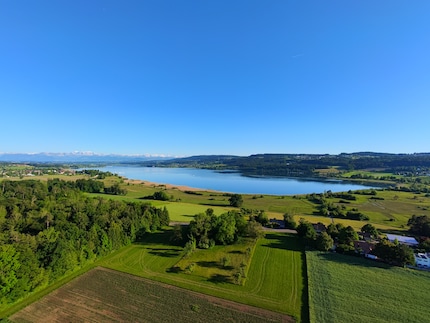
DNG format is a strange choice: it has a slightly different resolution (4096×3072 instead of 4000×3000 pixels) and a significantly different image section selection. The scope for tone value corrections is modest compared to a full-frame camera – no shocker here. I’m more surprised that I can’t achieve a better result with the DNG format than with HDR-JPEG. The camera’s internal optimisation probably gets the maximum out of it.
Two small points of criticism remain. Still clearly visible chromatic aberrations do occur. However, they’re significantly rarer than with the X1.
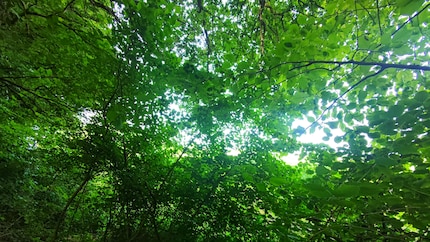
If I take photos with 48 instead of 12 megapixels, the lens reaches its limits. At 1:1 magnification, details are blurry. However, this is also to be expected with such a small lens. After all, the resolution is also higher in real terms than with 12 megapixels.

Sound quality: still suboptimal
Drone videos normally have no sound. You’d only hear the sound of the propellers anyway. However, since hover-air drones are designed as selfie drones, you can also record sound via the app by speaking into your smartphone. Videos stored on the drone are still mute this way, but when you download them via the app, they’ll be merged with the recording.
As with the X1, drone noise is effectively filtered out: you hear nothing, even in small indoor spaces where the drone is so loud I can barely hear my own words. However, the aggressive filter impairs voice quality. Hardly anything has improved compared to the X1 here. Setting the filter to Extreme instead of Normal still feels useless to me, since Normal already filters very aggressively.
In the above recordings shot with the Promax, the sound and picture aren’t synchronised correctly either. In a second test and with the latest firmware update, the synchronisation was fixed. I never had this problem with the X1.
In a nutshell
Impressive, somewhat pricy evolution
The Hover Air X1 Promax adopts the impressively simple operating concept behind the Hover Air X1, just without a remote – it often manages without even a smartphone. In doing so, it’s better almost across the board. It flies longer, more stable, further and higher, with extra flight modes, more memory and intriguing accessories – much more versatile, then. The picture quality has also improved. It’s remarkable for such a small drone, especially for videos. However, the lacking voice quality in dubbed videos hasn’t improved. This somewhat limits the usefulness of the hover drone as a flying vlog camera.
Despite the many advantages of the X1 Promax, the older X1 may be the better choice for some: to start, it’s now much cheaper. The combo version of the Promax in particular is pretty overpriced to me (as of June 2025). In addition, the X1 Promax isn’t quite as easy and safe to fly as the X1. For example, if you want to take pics of bicycles at high speed and possibly control things manually, you’ll need to know exactly what you’re doing and ideally get a second person to help.
Still, the X1 Promax remains easier to operate than most other drones. In conclusion, we’ve got a successful evolution of the X1.
Pro
- Light and compact
- Simple operation
- Integrated storage
- Solid automatic flight modes
- Portrait mode included
- Robust propeller protection
- High-quality video
Contra
- Expensive (combo option)
- Middling flight time
- Shorter range than drones with remote control
- Sound quality middling at best

My interest in IT and writing landed me in tech journalism early on (2000). I want to know how we can use technology without being used. Outside of the office, I’m a keen musician who makes up for lacking talent with excessive enthusiasm.


